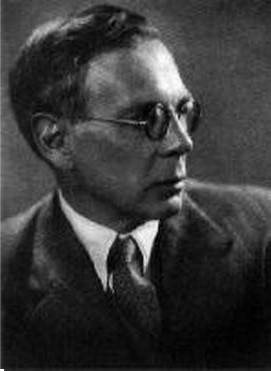
Charles Walter Stansby Williams was an English poet, novelist, playwright, theologian and literary critic. Most of his life was spent in London, where he was born, but in 1939 he moved to Oxford with the university press for which he worked and was buried there following his early death.
This article contains information about the literary events and publications of 1914.
This article contains information about the literary events and publications of 1936.

The Man Who Was Thursday: A Nightmare is a 1908 novel by G. K. Chesterton. The book has been described as a metaphysical thriller.

The Posthumous Papers of the Pickwick Club was the first novel by English author Charles Dickens. His previous work was Sketches by Boz, published in 1836, and his publisher Chapman & Hall asked Dickens to supply descriptions to explain a series of comic "cockney sporting plates" by illustrator Robert Seymour, and to connect them into a novel. The book became a publishing phenomenon, with bootleg copies, theatrical performances, Sam Weller joke books, and other merchandise. On its cultural impact, Nicholas Dames in The Atlantic writes, "'Literature' is not a big enough category for Pickwick. It defined its own, a new one that we have learned to call 'entertainment'." The Pickwick Papers was published in 19 issues over 20 months, and it popularised serialised fiction and cliffhanger endings.

"The Man in the Moon Stayed Up Too Late" is J. R. R. Tolkien's imagined original song behind the nursery rhyme "Hey Diddle Diddle ", invented by back-formation. It was first published in Yorkshire Poetry magazine in 1923, and was reused in extended form in the 1954–55 The Lord of the Rings as a song sung by Frodo Baggins in the Prancing Pony inn. The extended version was republished in the 1962 collection The Adventures of Tom Bombadil.

Father Brown is a fictional Roman Catholic priest and amateur detective. He is featured in 53 short stories by English author G. K. Chesterton, published between 1910 and 1936. Father Brown solves mysteries and crimes using his intuition and keen understanding of human nature. Chesterton loosely based him on the Rt Rev. Msgr John O'Connor (1870–1952), a parish priest in Bradford, who was involved in Chesterton's conversion to Catholicism in 1922. Since 2013, the character has been portrayed by Mark Williams in the ongoing BBC Television Series Father Brown.
Maurice Baring was an English man of letters, known as a dramatist, poet, novelist, translator and essayist, and also as a travel writer and war correspondent, with particular knowledge of Russia. During World War I, Baring served in the Intelligence Corps and Royal Air Force.

Joseph Pearce, is an English-born American writer, and as of 2014 Director of the Center for Faith and Culture at Aquinas College in Nashville, Tennessee, before which he held positions at Thomas More College of Liberal Arts in Merrimack, New Hampshire, Ave Maria College in Ypsilanti, Michigan and Ave Maria University in Ave Maria, Florida.
This is a list of the books written by G. K. Chesterton.
G.K.'s Weekly was a British publication founded in 1925 by writer G. K. Chesterton, continuing until his death in 1936. Its articles typically discussed topical cultural, political, and socio-economic issues yet the publication also ran poems, cartoons, and other such material that piqued Chesterton's interest. It contained much of his journalistic work done in the latter part of his life, and extracts from it were published as the book The Outline of Sanity. Precursor publications existed by the names of The Eye-Witness and The New Witness, the former being a weekly newspaper started by Hilaire Belloc in 1911, the latter Belloc took over from Cecil Chesterton, Gilbert's brother, who died in World War I: and a revamped version of G. K.'s Weekly continued some years after Chesterton's death by the name of The Weekly Review.
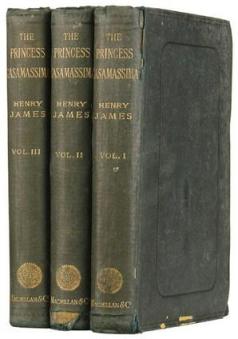
The Princess Casamassima is a novel by Henry James, first published as a serial in The Atlantic Monthly in 1885 and 1886 and then as a book in 1886. It is the story of an intelligent but confused young London bookbinder, Hyacinth Robinson, who becomes involved in radical politics and a terrorist assassination plot. The book is unusual in the Jamesian canon for dealing with such a violent political subject. But it is often paired with another novel published by James in the same year, The Bostonians, which is also concerned with political issues, though in a much less tragic manner.

Christian literature is the literary aspect of Christian media, and it constitutes a huge body of extremely varied writing.
"The Rolling English Road" is one of the best-known poems by G. K. Chesterton. It was first published under the title "A Song of Temperance Reform" in the New Witness in 1913. It was also included in the novel by Chesterton, The Flying Inn, in 1914.
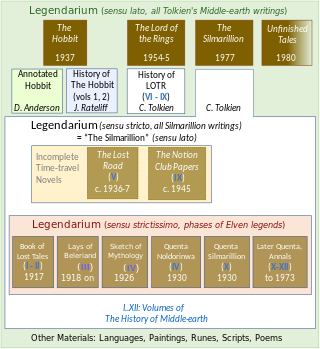
Tolkien's legendarium is the body of J. R. R. Tolkien's mythopoeic writing, unpublished in his lifetime, that forms the background to his The Lord of the Rings, and which his son Christopher summarized in his compilation of The Silmarillion and documented in his 12-volume series The History of Middle-earth. The legendarium's origins reach back to 1914, when Tolkien began writing poems and story sketches, drawing maps, and inventing languages and names as a private project to create a mythology for England. The earliest story, "The Voyage of Earendel, the Evening Star", is from 1914; he revised and rewrote the legendarium stories for most of his adult life.
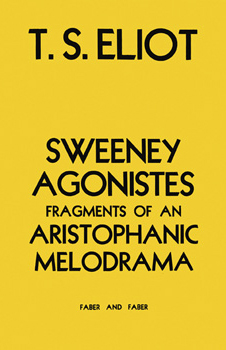
Sweeney Agonistes by T. S. Eliot was his first attempt at writing a verse drama although he was unable to complete the piece. In 1926 and 1927 he separately published two scenes from this attempt and then collected them in 1932 in a small book under the title Sweeney Agonistes: Fragments of an Aristophanic Melodrama. The scenes are frequently performed together as a one-act play. Sweeney Agonistes is currently available in print in Eliot's Collected Poems: 1909–1962 listed under his "Unfinished Poems" with the "Fragments of an Aristophanic Melodrama" part of the play's original title removed. The scenes are separately titled "Fragment of a Prologue" and "Fragment of an Agon".

"Lepanto" is a poem by G. K. Chesterton celebrating the victory of the Holy League in the Battle of Lepanto (1571) written in irregular stanzas of rhyming, roughly paeonic tetrameter couplets, often ending in a quatrain of four dimeter lines. The poem tells of the defeat of the Ottoman fleet of Ali Pasha by the Christian crusader, Don John of Austria. The poem was written in 1911 and published in Chesterton's 1915 collection Poems.
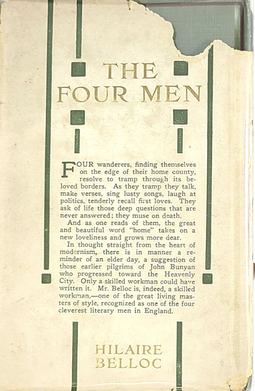
The Four Men: A Farrago is a 1911 novel by Hilaire Belloc that describes a 140-kilometre (90 mi) long journey on foot across the English county of Sussex from Robertsbridge in the east to Harting in the west. As a "secular pilgrimage" through Sussex, the book has parallels with his earlier work, the religious pilgrimage of his autobiographical The Path to Rome (1902). "The Four Men" describes four characters, Myself, Grizzlebeard, the Poet and the Sailor, each aspects of Belloc's personality, as they journey in a half-real, half-fictional allegory of life. Subtitled "a Farrago", meaning a 'confused mixture', the book contains a range of anecdotes, songs, reflections and miscellany. The book is also Belloc's homage to "this Eden which is Sussex still" and conveys Belloc's "love for the soil of his native land" of Sussex.

Frances Alice Blogg Chesterton was an English author of verse, songs and school drama. She was the wife of G. K. Chesterton and had a large role in his career as amanuensis and personal manager.

The Saracen's Head was an inn on the north side of the street to the west of the church of St Sepulchre-without-Newgate in Snow Hill, London. When Sarah Ann Mountain was in charge they made stagecoaches here and fifteen of them left each day for destinations including Birmingham and Leeds.














